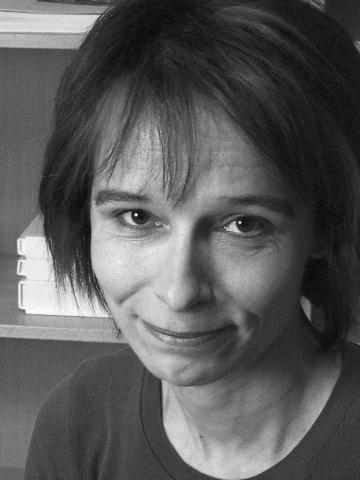Bio
Linda Vilhjálmsdóttir was born on June first, 1958 in Reykjavík. She is educated as a nurse assistant and works as such alongside her writings. Linda’s poetry has appeared in newspapers, magazines and collections since 1982, and her first book of poetry, Bláþráður (Blue Thread), was published in 1990. Since then she has published other books of poetry and her plays and poetry happenings have been staged in the Reykjavík City Theatre and The Café Theatre. Linda was one of seven young poets to participate in the poetry happening Fellibylurinn Gloría (Gloria the Hurricane), published on tape in 1985. Her poetry was exhibited in the Reykjavík Art Museum at Kjarvalsstaðir in April 1993. Linda sent forth her first prose book, Lygasaga (A Story of Lies) in 2003.
Linda was awarded the DV Cultural Prize for literature in 1993 for her book of poetry Klakabörnin (Ice Children). Her poetry has appeared in collections in Iceland and abroad.
Linda Vilhjálmsdóttir lives in Reykjavík.
Publisher: Mál og menning.
Author photo: The Reykjavík Museum of Photography.
From the Author
From Linda Vilhjálmsdóttir
The only thing I can remember having meant to do when I grew up, was writing books. I did not plan to become anything in particular, just to write books, long before I knew what that kind of a worker was called. I was a little worried, not at the start, but when I had been in school for a while I became increasingly worried about whether I would succeed in this plan or not. I wasn’t quite good enough at spelling, grammar was tough and I could not figure out the punctuation. I my teenage years it also became clear I wasn’t the best at typing, giving me some preview at difficult days reading scripts later on. All in all, I was for some time concerned about the form and the workmanship and it discouraged me. The content however I did not worry about at all, as I turned most things into a story and my head has always been filled with true, exaggerated and fictive stories. Some of this improvisation made it to the paper, as I started putting together little verses and stories in notebooks as soon as I learned how to write, and later I got my sewing-circle friends involved in magazine publishing, in order for me to be able to air my products more frequently and in bigger numbers.
The majority of my stories however was never put on page, instead these stories became the foundation in the-dream world I created and lived in for the biggest part of my childhood.
From a very young age, I made up my own version of every single story I heard or read. I moved them in place and placed myself, my family and friends in the roles, living in this world until the story had come to an end. I was either an orphaned blind girl who was starving; a girl investigator looking for smuggled goods at the shore at Grótta, although I had no clue what the word “smuggle” meant; a beautiful and profoundly sad princess from the East; or a single mother of two, a mourning widow of a former U.S. president. I read everything I could put my hand on when I was a kid, being a frequent visitor at most libraries in town, but most likely it would have been better if someone with knowledge had led me through the maze of literature.
I however did not seek such guidance, and would probably not have noticed the things pointed out to me, even if they were being held up to my eyes. I needed to discover all of this on my own, always having taken the most difficult path towards all of my goals. My reading habits thus at times became quite extreme, as in my teenage years when I leaped from Alistair McLean, Sven Hazel and Victoria Holt, to T.S. Eliot Ezra Pound and James Joyce. In my early twenties, I started publishing my poems in magazines and newspaper supplements, and got such good reviews that I became scared. I felt that I could by no means fulfil the expectations I imagined people had about me, whereas the reality was that I could not fulfil my own demands to myself. At this time, I stopped enjoying writing, this being the case for a number of years to come – writing was for me painful and I wanted to be free from it, but still never fully managed to give it up. For this reason, a whole decade went by until I dared do what I nevertheless knew was inevitable, publish my poems in a book.
I find it likely that the reporter, who interviewed me briefly on TV when the book came out, thought I was unnaturally self-confident. He asked me, among other things, why I wrote, or however he put it, and I replied, unusually honest, that I did so because I knew how to do it. He probably found the answer too boastful, causing him to kindly edit it out before airing the interview. I am however more convinced now than ever before that if I make an effort, I am better at writing than anything else I do. And after I succeeded in letting go of my perfectionism, not many things give me as much pleasure as putting together stories, plays and poems. A more rewarding job is hard to find. Of course, writing is most fun when things are going well, but what I find most important is to be at last content with myself and with my lot in life.
Written at the end of August in the year 2002,
Linda Vilhjálmsdóttir.
Translated by Kristín Viðarsdóttir.
About the Author
“If I Had Written a Poem to You”: All the Beautiful Words of Linda Vilhjálmsdóttir
The Poem’s Best Friend (Besti vinur ljóðsins) is a group of poetry’s well wishers that regularly hosts poetry readings in Iceland. The group appeared in the middle of the eighties, when interest in poetry was strong and poetry readings were popular among people of all ages, although the majority of the audience consisted of young people. The people leading the group were young themselves, among them were Hrafn Jökulsson and Kristján Þórður Hrafnsson.
Many of the poets who participated in these readings have later become well known: Margrét Lóa Jónsdóttir, Bragi Ólafsson, Kristín Ómarsdóttir, Sindri Freysson, Þórunn Valdimarsdóttir, Óskar Árni Óskarsson, Kristján Kristjánsson and Gerður Kristný stood on the podium alongside better known young and older poets, such as Þorsteinn frá Hamri, Gyrðir Elíasson, Steinunn Sigurðardóttir and Ingibjörg Haraldsdóttir, and the main emphasis was on giving little known poets an opportunity to present their writings.
Linda Vilhjálmsdóttir was one of these, and was duly noted. Her first book did not appear until 1990, named Bláþráður [Blue Thread].
Even though The Poem’s Best Friend was open to experimentations in poetry, it can safely be said that the poets that were closest to the core of the group wrote poetry in a distinct style which can not exactly be called traditional, but might be termed moderate. Perhaps this moderation seems almost traditional in relation to the surrealistic and chaotic poetry of the Medusa-group, active in the first part of the eighties. In many ways it could be said that The Poem’s Best Friend appeared as a kind of answer to the unruliness of the Medusa-people, who aligned themselves with surrealism and hosted a number of happenings, film viewings and readings – where people competed in reading poetry and read it over each others readings, they drove cars into the reading halls and drank blood, the poets appeared half naked with sliced mutton on their heads, they played chess at the same side of the board, sprayed perfume all around and played drums on books, to name a few examples of Medusa’s antics. The readings were more similar to poetry-orgies and were often related to the theatre, as should be clear from this account. The poetry readings of The Poem’s Best Friend were quite different, however. These were mostly traditional readings of poetry – and/or readings from another kind of fiction – at most this was mixed with music, and was wholly without happenings of any kind. This simple approach to the reading mirrors the approach to the poem characterising the majority of poetry read in these gatherings. The stylistic expression that I here designate as the hallmark of The Poem’s Best Friend is often quiet and sincere, the imagery is simple and the overall aura is serious, even formal, while humour was not outlawed. Thus it is safe to say that this poetry was more digestible than the surrealist and strange poetry of the Medusa-poets.
Linda Vilhjálmsdóttir’s first two books are very much in this style and stand as excellent examples of its possibilities and strength. Bláþráður is especially interesting for illustrating a clear development of this style, and it is apparent that the poems are written over a long period of time. The first poems are simple and concise and a bit dramatic as seen in “Stillimynd” [Still Image]:
Þá nemur þú staðar
á glerbrotaströnd
í svarthvítri martröð
á mörkum draumsins og draums.[Then you halt
on a beach of broken glass
in a black and white nightmare
at the border of the dream and a dream.]
These first poems are characterised by a certain self examination and at times the poetess creates a parallel between herself and nature, as in “Ljósmynd” [A Photo]:
Fljótandi á kafi
í sægrænu grasinu
og kitlandi sumrinu
opna ég dökkbrún augun
mót bláma himinsins.[Floating in the depths
of the seagreen grass
and the tickling summer
I open my dark brown eyes
against the blue of the sky.]
Further into the book imagery of nature becomes more and more noticeable. In “Ísbjörn” [Polar Bear] the narrator says that if the addressee will become “blue/as the sea” then the narrator will become “white/as a polar bear/of plastic with gloves/and a mask//as prepared/for a crucifixion/as possible.” This religious theme appears again in the “Austfjarðarþoka” [Fog in the Eastern Fjords], and merges with the visualisation of nature as is often seen in Icelandic nature poetry where god and nature merge into one. The poem starts with a folktale, for “seen from the cliff/the folktale is an unbroken/endless blue thread”. Suddenly winter appears “risen” “in the high hills”:
hvílíkt
og eitthvað guðlegt
hafi niðurrétt sæng
og breytt yfir fjörðinn
þá gróðursett smáfjöll
og búið til glænýja tegund af skýjum og himni.[as if
something godly
has passed a duvet
and covered the fjord
then planted small mountains
and made a brand new type of clouds and sky.]
In Klakabörnin [Children of Ice] (1992) this image of godly nature appears again, probably at its strongest in “Mona Lisa: fyrsta mósaíkmynd handa Kristjáni Steingrími” [Mona Lisa: First Mosaic for Kristján Steingrímur]:
þennan morgunn reis regnbogi úr sjónum við vesturenda engeyjar
og stakk sér niður við austurendann á vesturey viðeyjarhafi rignt rigndi í nafni guðs
ösku og sandi og kalki
hvað hafði gerst nóttina á undan?[that morning a rainbow climbed from the sea at Engey’s west end
and plunged at the east end of Viðey’s western islandif it rained in the name of god
ashes and sand and lime
what had happened the night before?]
This personal image of catastrophe is amusingly reminiscent of the poem “Miðnætursól” [Midnight-sun] in Bláþráður, where the narrator opens up a vein:
og liturinn rauður er legíó
ívafið messínggult
koparhár fléttað í nornaþráð
slær kórréttan blæ
í hverablátt
hafið og himininn
og blóðrauðu spanskgrænar fígúrur
sem stíga svarfdælskan mars.
Þá skal tína til svart
krúnk í krummann
útmálaðan
kroppandi í gullið í fjallinu.[and the colour red is legion
laced with messing yellow
copperhair braided into a witches thread
hits a perfectly correct nuance
in the geyser-blue
sea and sky
and the blood red mouldy green figures
dancing a march from svarfaðardalur.
Then some black should be added
a sound for the raven
eloquent
picking at the gold in the mountain.]
In both cases we witness a unique visualisation of nature, colourful and unexpected and above all unstable, the landscape is moving and into this tumult the blood of the poet is mixed, possibly it is also a gushing magma as in the poem “Himnabréf” [Heavenly Letter], the first poem in Klakabörnin. The narrator of the poem has been thrown from the heavens like an unruly angel and now he hangs loose and counts sheep: “I!/With gushing magma/in my veins//and one touchy spot/blue on the breast/shaped as the crescent moon.” Here the narrator seems to span heaven and earth and take on the role of the moon. The religious symbolism is still present, for the unruly angel is of course Lucifer who possibly has also magma in his veins.
But who is this narrator? At times she is definitely a poet, for there are many reflections on poetry and the poet. This is particularly noticeable in Klakabörnin, a tighter and more personal book than Bláþráður. The narrator is more assertive and the reader is more aware of the poetess, particularly in the poems that discuss poetry. Right in the third poem of the book, “Nótt – II” [Night – II], the narrator steps forward and says: “for you/magic poet/magic poet.” In “Veður – II” [Weather – II] the narrator roars “I love you!” into the wind and tries “to sound like a major poet”. In these poems we witness the poetess’ urge to create a place for herself within the masculine tradition, but the miracle poets were mainly male and generally the great poets of Iceland are also male. This does not always work out and at times the poetess is forced to bow her head and “mutter under her breath/something poetical” as in the poem “Skáldskapur: handa hrafni” [Poetry: For Hrafn/a Raven]. The muttering seems to be a justification, for the poetess has found the one she addresses “at the top of the cupboard/where the nights are kept” where he mourns himself and she mutters “as if there is not also unhappiness/in my family”. In the final poem the poetess takes a decisive position and says in “Farvel í lokinn: kveðja til Halldórs Guðmundssonar” [A Farewell for Now: My Best to Halldór Guðmundsson]: “I am a female poet and have almost become a witch/and cannot bother to seek out a road that seems straight/I go my own way like the cat – farewell for now.” All these poems are ironical, the poetess grins at herself and her attempts at poetry, while she stresses her right to be “a female poet”.
The same sense of humour characterises Linda’s poems about poetry. In Bláþráður an “Apparition” cleaves bookshelves into two halves, through Sturlunga-Saga: “And by chance I catch the words:/”And now little devils slay me.”” And in “Eldskírn: í kvistherbergi á austurbrú” [Baptism by Fire: in an Attic Room in Copenhagen] in Klakabörnin Greek tragedies are baptised in water after a candlelight had caused a fire on the night that “the story about the fire in Copenhagen” was read out loud to the narrator, or was it perhaps the light of the world? [Fire in Copenhagen and the Light of the World are both titles of parts of the novel The Clock of Iceland by Halldór Laxness, describing the collection of manuscripts by Árni Magnússon, many of which burned in the fire in Copenhagen in 1728.]
Just like nature is a part of the narrator, literature seems to function as personal or actual events rather than poetic memories. This casual spirit of literature reflects enjoyably on how Linda creates poetry out of everyday life. Linda works as an assistant nurse as well as a writer, and in Klakabörnin there are poems that refer to her occupation. In “Mona Lisa: Second Mosaic” a night is described where two women have died and “the third was on the brink at dawn”. The narrator recalls only three things, “distorted faces/in pain anaesthesia and terror”, “the smile appearing/at the final breath//and at last/I accepted the meaning of the word/peace.”
In the poem “Klakabörnin” [Children of Ice] a much more comical image is presented, where an old lady is convinced that she has been operated on to place ice-children within her, and now she has to give birth to them. And the nurses that in the woman’s mind have become midwifes take the children and do not know what they are supposed to do with them. Klakabörnin also contains a few poems about childhood memories, most of them short prose poems. In “Búið með sauðfé” [Living with Sheep] the narrator describes how she identifies with sheep and in “Skúrasaga: handa Veru, Söru og Þórhildi” [A Story of Sheds: For Vera, Sara and Þórhildur] the story of how old men used to work in their sheds in the old days is told. In “Skiparadíó” [The Ship’s Radio] a seaman’s daughter is describing her prayers to god, where she asks him to wake over all of us who sleep, some on land and some at sea.
In the prologue to her third book of poetry Valsar úr síðustu siglingu [Waltzes from the latest Sea Voyage] (1996) Linda describes exactly this, that as a child she found it necessary to pray for all the myriad of fishermen, ships and crews that she came across with her father the fisherman. The book is inspired by this upbringing close to the ocean and the fishermen’s songs, and describes a sea voyage she took in her adult years. The book is thus a kind of long poem, which is indicated in its size, small and delicate. Time is collapsed and other sea voyages and memories linked to the sea are mixed together into a complete and beautiful story, that is, as so often in Linda’s poetry, very ironic:
sé ég spurð
um ferðina tala ég fjálglega
um osta vín og guðdómlegt konjakkfer varla að játa
að ég eins og sæmundur forðum
og fást hafi gert afleitan kontrakt[if I am asked
about the voyage
I speak eloquently
about cheese wine and divine cognacI will hardly confess
that I as sæmundur so long ago
and faust signed a lousy deal]
The poetess is taken along on the voyage and even though she is “not wearing a jacket/with a walking stick” she saunters “dandylike/in the storm on the deck” and acts like the Polish repairman is a sun chair and the seagull who hovers above her ready to puke is a sunshade. Actually we do not really know who is about to puke, the seagull or the poetess, but in the poem “dauðahafið” [deathsea] we are told that like her father, grandfathers, forefathers and vikings, she does not become seasick: “have been at sea/since I was born on sea/man’s day and the blood/in my veins is saltier than the surf”. Religious images are taken along as well, the ship is likened to a large fish which has swallowed the narrator and the stomach is supple and alive. In a rather rough sea, god runs his fingers godly through the hair while the narrator falls asleep. And in an unexpected reflection about a divine creation the poem “hvítanestýran” [the small flame in Hvítanes] (a reference to a folktale, where eternal fire burned on the end of a human rib, well covered in fat) explains that “if I could get a bone/and a bite from the side/of each man//and created women from it/I would be called/a witch”.
This poem follows upon three other poems about the food on board. But perhaps she is just tired of this man’s world? For the poem before this is called “saltskip” [ship of salt] and there the narrator describes how masculine it is to scrub the rust away, “paint with rust repellent/and paint over the rust//the ship gets thinner/and thinner”. The poems are enjoyable and lively and the reader experiences the rolling of the sea and also the masculine society on board.
The book Valsar úr síðustu siglingu is in many ways different from Linda’s earlier books, it is more effortless and casual, but perhaps not as effective as Klakabörnin. In some ways it’s form functions as a kind of exercise for the next book of poetry, Öll fallegu orðin [All the Beautiful Words] (2000), without doubt Linda’s best book of poetry. Her language is, as before, effortless and direct, she uses metaphors sparingly, the text is more descriptive than visual, in the way that she describes scenes and events, rather than flashing sudden images. Thus the poems of Öll fallegu orðin are clear and easily accessible, straight to the point, and carry a kind of narrative element. The book is conceived of as a whole, a story about love and loss, and is thus, like Valsar, more like a long poem then a collection of individual poems, even though all the poems can stand alone. Despite this the two books are completely different, for while Valsar is a happy book and a little wobbly on its feet, Öll fallegu orðin is full of pain and mourning, the poems touch the reader deeply and do not give in, in their struggle with emotions and memories. The book can be seen as a long love poem, and while love poems are to be found in both Bláþráður and Klakabörnin, they do not prepare the reader for the effect of Öll fallegu orðin.
The book describes a love affair that is over, and seems to be inspired by the death of the lover who has possibly committed suicide. The narrative is all in a back flash, where the narrator recalls their relationship, love, conflict, separation and regret. One memory is about the lover’s wish to go somewhere else and do something, go to Þingvellir or abroad or out to dinner: “but we never went anywhere/together neither to paris/þingvellir or out to dinner/we stayed inside//and now my memories are/limited to two chairs/a corner of a desk the cell phone/the bathroom and the bed//and still I miss you”. The dream about the open vista of love is transformed into the narrow space of sorrow. And the narrator wishes to hold onto this pain and seems to feed on it for in one of the poem it says: “have found myself/willingly opening the wounds/these last days”. She walks around the house of the dead lover and breathes in the smell and recalls their last relations and the news of a poem he had written to her, “and now I can continue/to pick at the scab for awhile//now it hurts.”
In between these memories there are poems describing what seems to be the funeral of the lover, and the reader could almost imagine that the poems are the reflections of the woman while she is sitting in the church:
kalt og þú varst ekki
varst ekki þú í kistunni
varst ekki líflaus líkami
varst ekki í anda í kirkjunni
þú hélst ekki ískaldri hendi
þinni um mína við gröfina
þína þú varst ekki þar[cold and your were not
were not you in the coffin
were not a lifeless body
were not in spirit in the church
you did not put your icy
hand in mine at your
grave you were not there]
The poems are without title, separated by lines, thus underlining that the book is to be read as a whole. This overall theme is remarkably strong and the disciplined language of the poetess keeps it all in check, images and themes are repeated, such as the theme of time, taking the mundane form of a wristwatch. The central theme of the book, beside love itself, is the poem, and words, and Linda spins around this delicate matter of love and loss a tight web of words, words talking about words, poems about poems, and creates a striking harmony of sincere expression and skilful art of words. These poems recall the reflections in the former books on the place of the poetess, only now with a different twist. The lovers discuss poetry and the lover recalls a poem of hers that she does not want to admit to. Later she is convinced that he is writing through her:
finnst eins og þú
sért að senda mér straum
svo ég uppljómistfinnst eins og þú fiktir
í tölvunni þegar ég þarf
að hnika til orðiog ég heimta
engar skýringar lengur
trúi því baraog trúi því líka
að þetta hafi allt verið planað
það að við hittumstvið kynntumst
og elskuðumst
að þú skyldir deyjasamt efast ég ekki
eitt andartak um það
að þú værir tilef ég hefði ort til þín ljóð
[feels like you
are sending me a current
so I will light upfeels as you are fiddling
with the computer when I have
to alter a wordand I demand
no explanations anymore
I simply believeand believe it too
that this was all planned
that we metand got to know each other
and love each other
and that you should diestill I do not doubt
one moment that
you would existif I had written you a poem]
Here the idea emerges that the lover possibly only exists in the words of poetry. But this is also a reflection on the lack of words, the poem that could have given the lover life was never composed. The same silence appears in the poem beginning with the same words as in the title: “did you alone say all the beautiful words/resounding in my head?/words I would earlier have/censored and stamped as to sweet?”, these words seem so simple and mundane but say so much: “for example when you said:/the sun always shines when you arrive//and I remember that I smiled my/brightest smile//just smiled/did I never say anything?”
The sincerity and the unpretentiousness that characterises the book is perhaps particularly noticeable in the light of that Öll fallegu orðin is a love poem, as love poetry runs possibly the largest risk of clichés and elevated language, as the narrator points out herself in the aforementioned poem. Love poetry has also been worn out in pop music lyrics, and thus it is often like the language of love is stultified, offering only pretentiousness or flatness. The pretentiousness of poetry was discussed somewhat in the nineties, following upon the demand for sincerity. The remarkable thing about that discussion was that suddenly it had become the antagonist of the personal expression of the poem, expression that I would have thought to hold exactly the largest possibility for sincerity? I find it strange and actually rather dodgy this phobia for poetry; could it be that the sincerity so avidly called for is nothing but a facade, or even a camouflage against the emotional closeness that the poem so often calls for?
However that may be; Linda illustrates that the poem is perfectly capable of sincerity and her book is a good example of that the poem is far from being in trouble, it still holds and will continue to say all the beautiful words.
© úlfhildur dagsdóttir, 2003.
Excerpts from the poems “Night-II”, “Mona Lisa - First Mosaic”, “Mona Lisa - Second Mosaic”, “Weather-II” and “Apparition” are translated by Sigurður A. Magnússon, published in Mona Lisa, 1993.
Articles
Articles
Allard, Joseph C. : “Linda Vilhjálmsdóttir (1958- )”
Icelandic Writers. Dictionary of Literary Biography, vol. 293, ritstj. Patrick J. Stevens, Detroit, Gale 2004, s. 241-245
See also: Neijmann, Daisy L., ed. A History of Icelandic Literature
University of Nebraska Press, 2007, pp. 449
Awards
2015 – The DV Cultural Prize for Literature: Frelsi (Freedom)
2015 – The Bookseller’s Prize, best book of poetry: Frelsi (Freedom)
2010 – The National Broadcasting System’s Writer’s Award
2005 – The Ljóðastafur Jóns úr Vör Award: The poem “Sónata fyrir forynju og fylgirödd”
1993 – The DV Cultural Prize for literature: Klakabörnin (Ice Children)
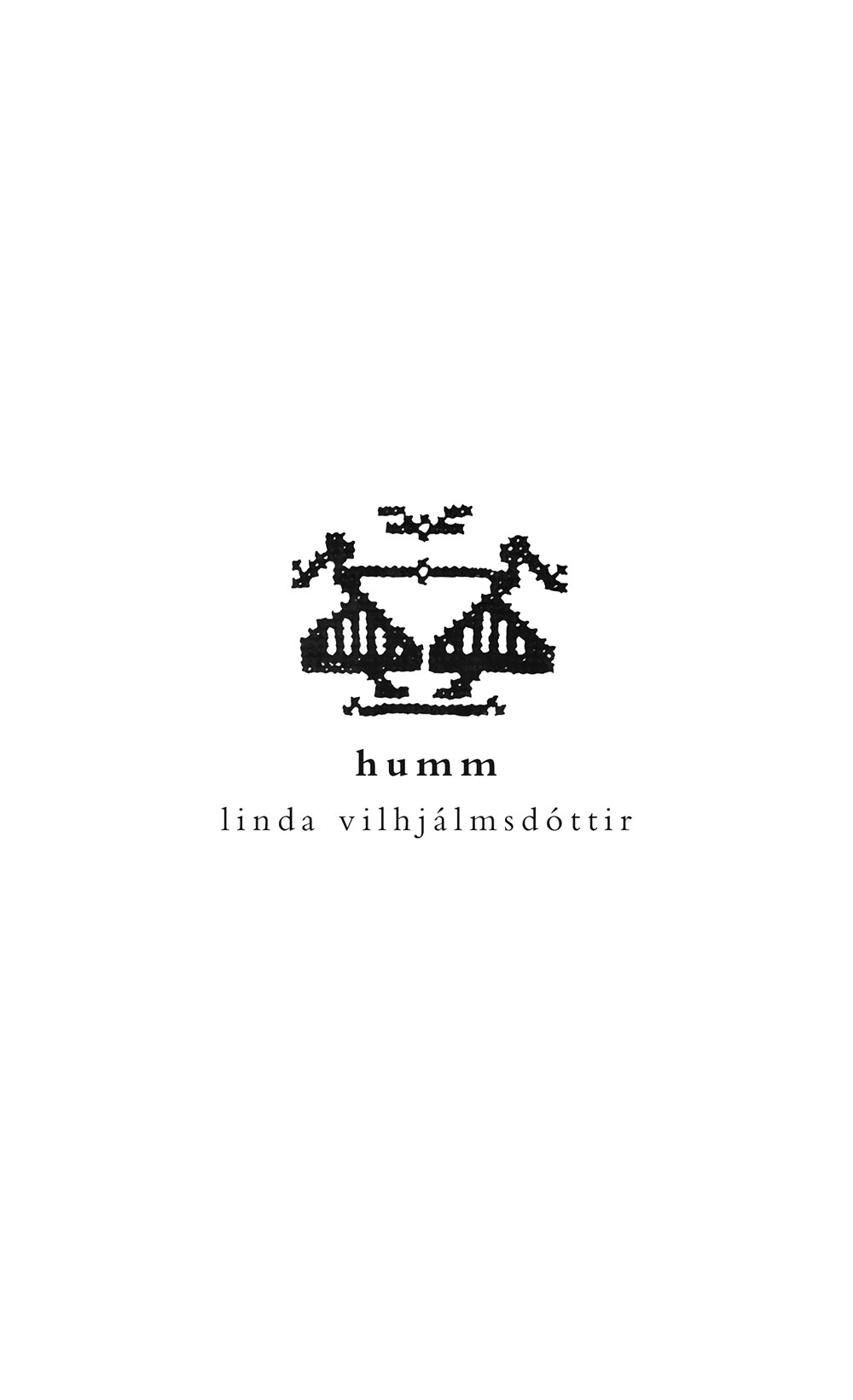
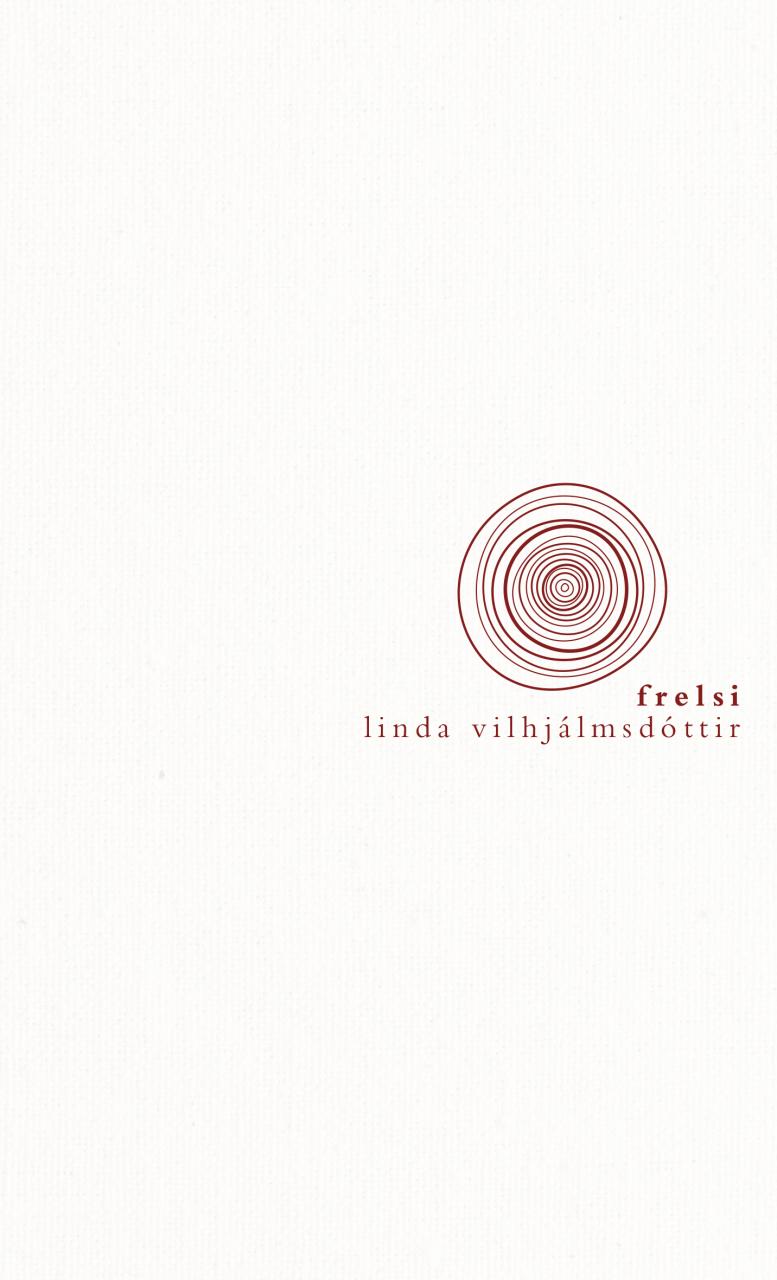
Frelsi (Freedom)
Read more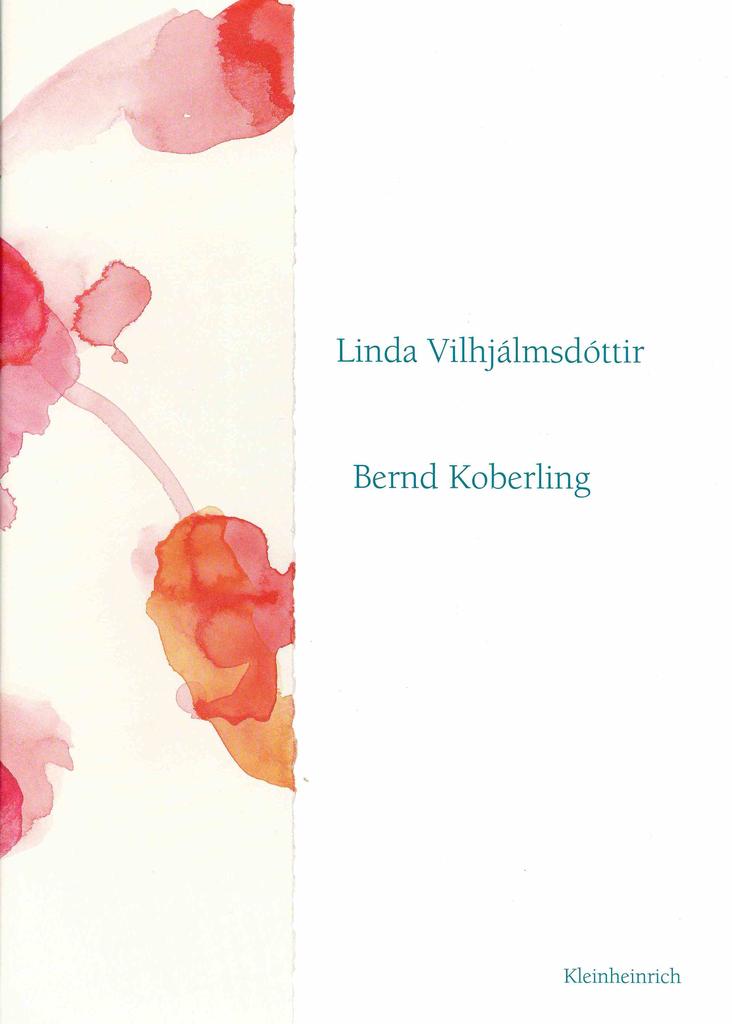
Alle schönen Worte
Read more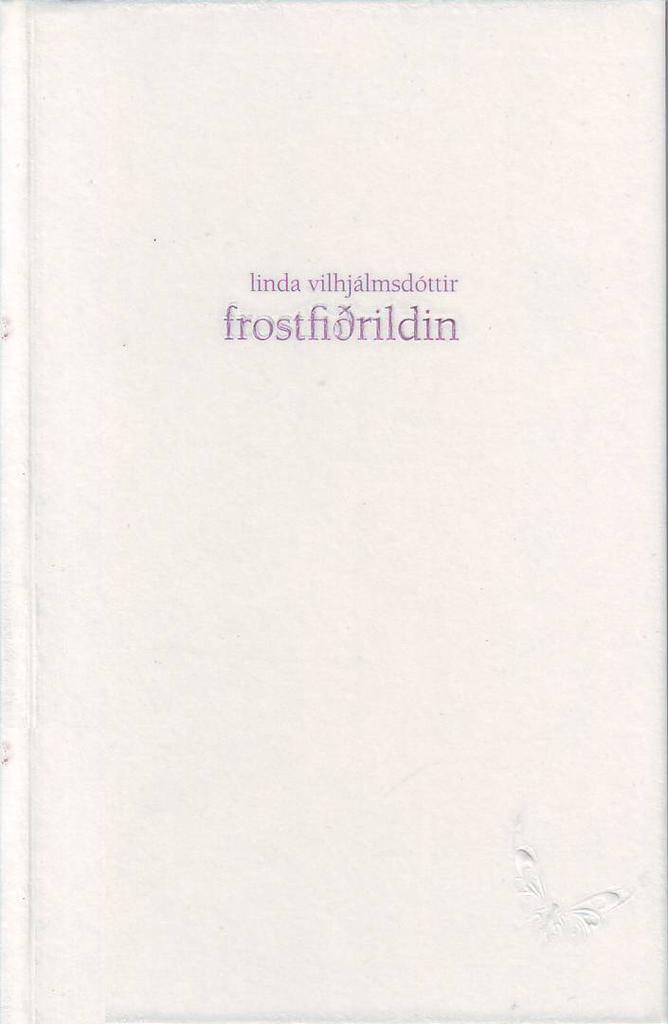
Frostfiðrildin (The Frost Butterflies)
Read more
Lygasaga (A Story of Lies)
Read more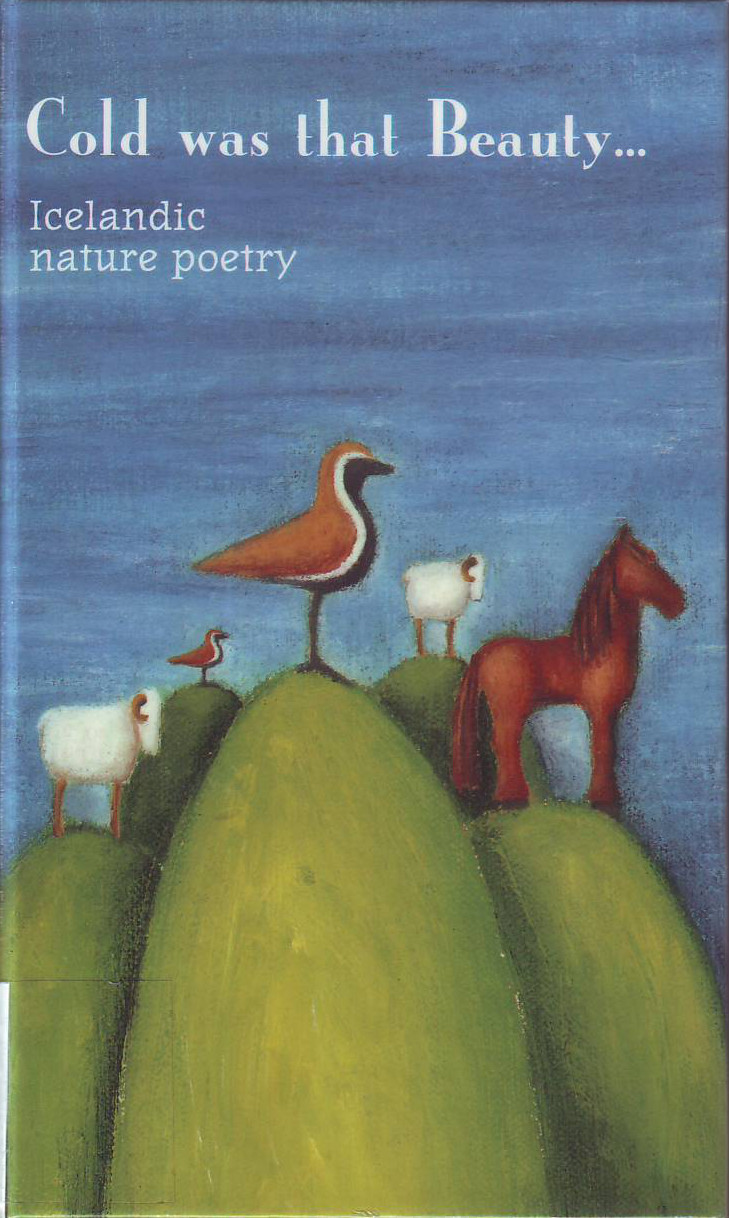
Poem in Cold was that Beauty: Icelandic Nature Poetry
Read more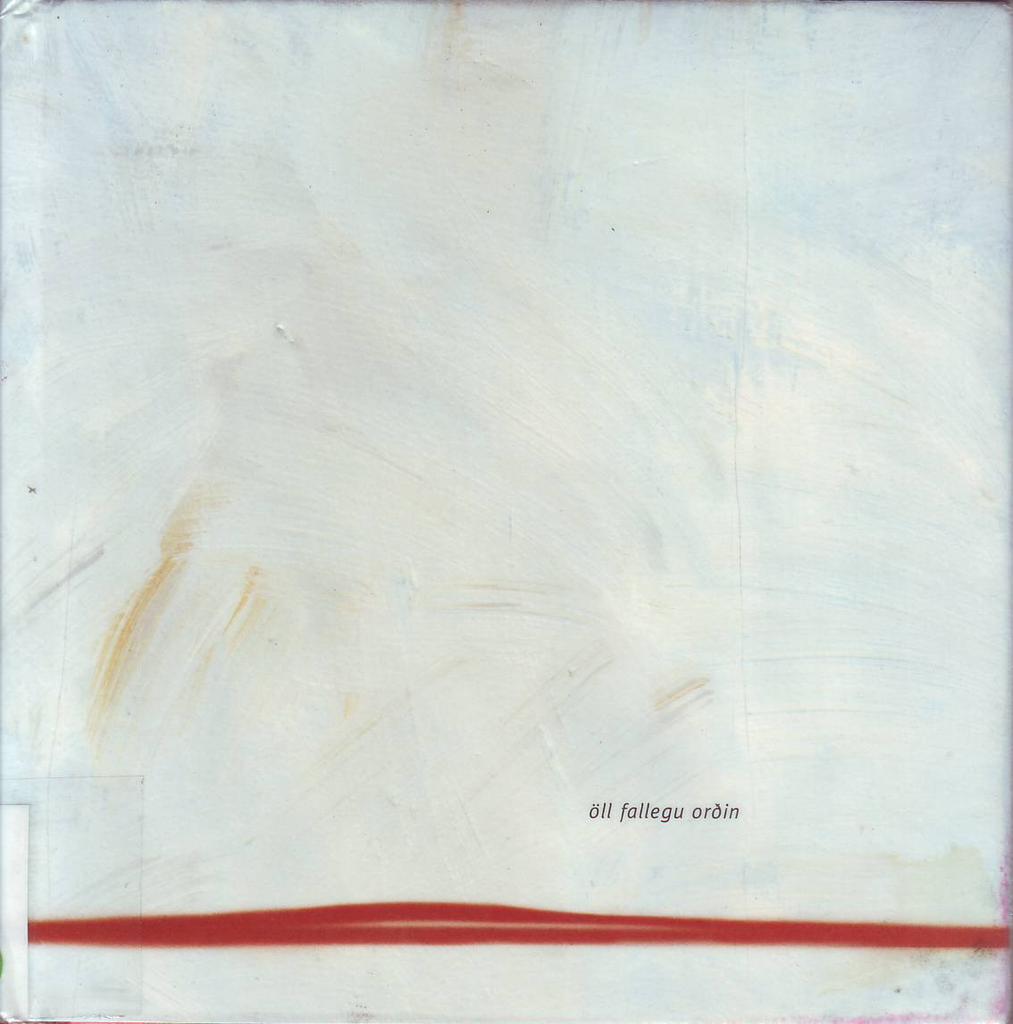
Öll fallegu orðin (All the Beautiful Words)
Read morePoems in Wortlaut Island
Read morePoems from The 30th Poetry International Festival Rotterdam
Read more
